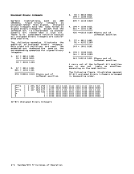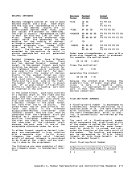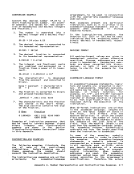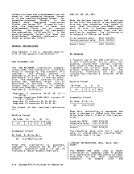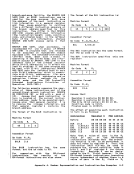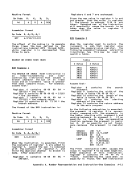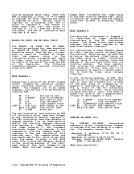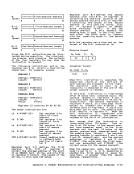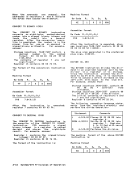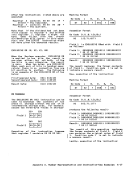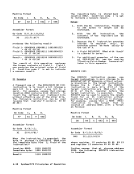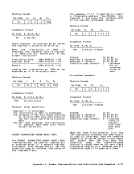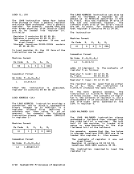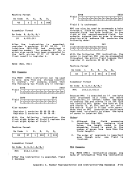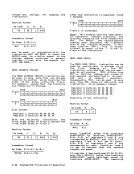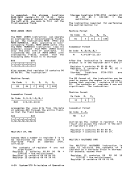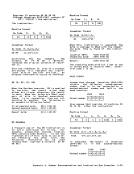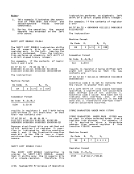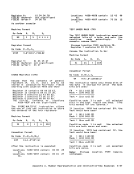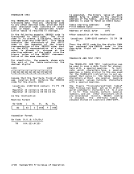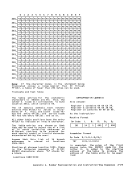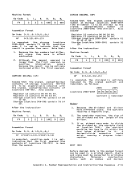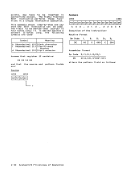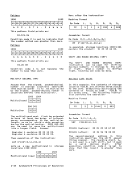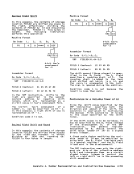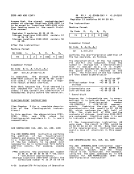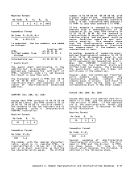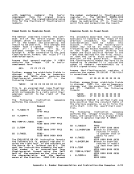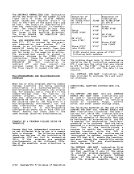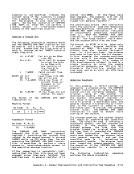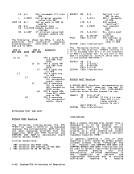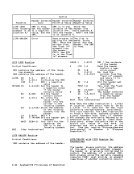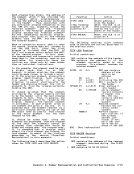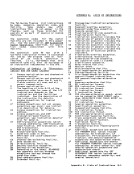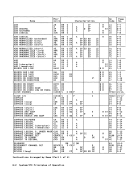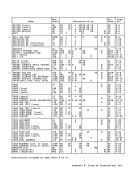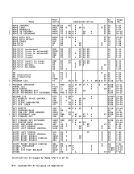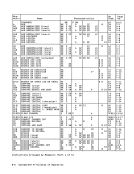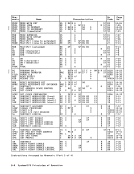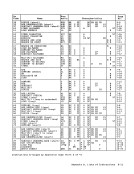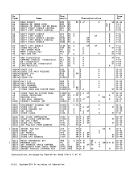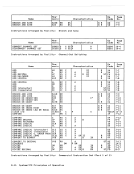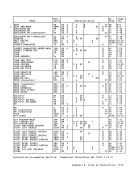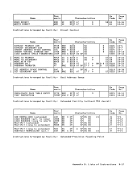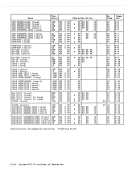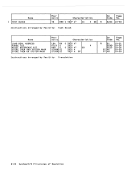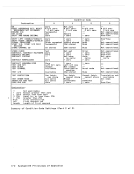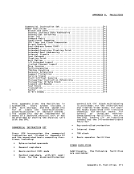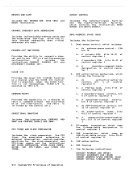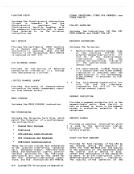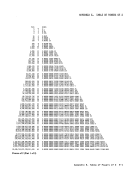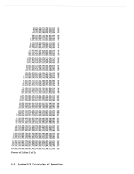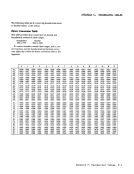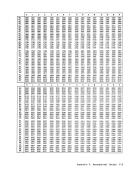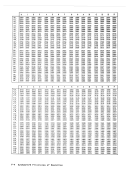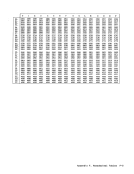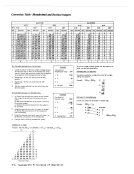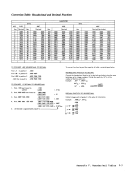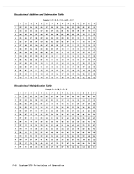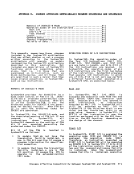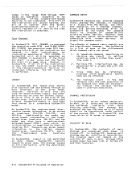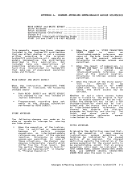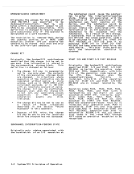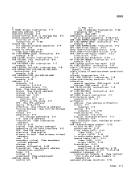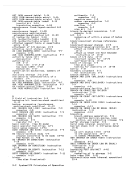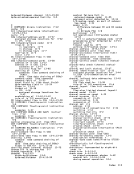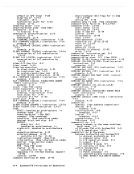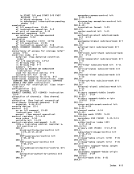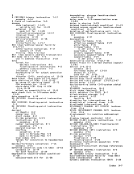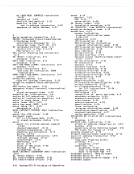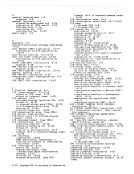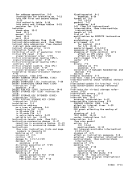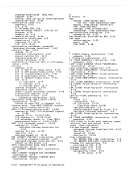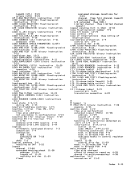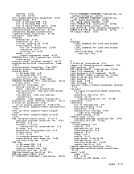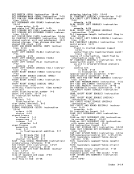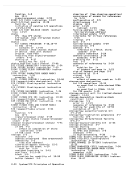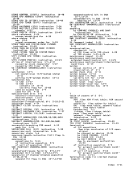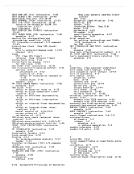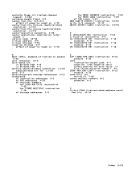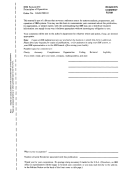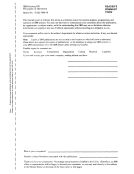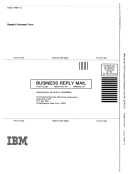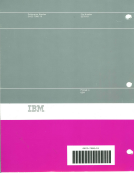detected. Any errors detected after
device end has been cleared are indi
cated by signaling unit check with
attention, unit check with control-unit
end, or unit check with device end.
Errors, such as invalid command code or
invalid command-code parity, do not
cause unit check when the device is
working or contains an interruption
condition at the time of selection.Under these circumstances, the device
responds by providing busy status and
indicating the interruption condition,
if any. The command-code invalidity is
not indicated.
Concluding an operation with the unit
check indication causes command chaining
to be suppressed.Unit check is presented in combination
with channelend and status modifier to
initiatethe command-retry procedure.
Programming Notes
1. If a device becomes not ready upon
completion of a command, the ending
interruption condition canbe cleared by the TIO function without
generation of unit check due to the
not-ready state, but any subsequentTIO function issued to the device
causes a unit-check indication.
2. In order that sense indications set
in conjunction with unit check are
preserved by the device until
requested by a sense command, some
devices inhibit certain functions
until a command other than theTIO function or no-operation is
received. Furthermore, any command
other than sense, theTIO function,
or no-operation may cause the
device to reset any sense informa
tion. Similarly, whenstart-I/O fast queuing is provided,
initiation ofI/O operations pend
ing at the time the unit check is
received may be inhibited for other
devices attached to the same
control unit. The initiation of
the pending operations is inhibited
until a subsequentI/O operation
(usually a sense operation) is
successfully initiated at the
device that presented the unit
check. To avoid degradation of the
device and its control unit and to
avoid inadvertent resetting of the
sense information, a sense command
should be issued immediately to any
device signaling unit check.
3. Unit-check status presented either
in the absence of or accompanied by
other status indicates only that
sense information is available to
the basic sense command. Presenta
tion of either channelend and unit
check or channel end, device end,
and unit check does not provide any
indication as to the kind of condi
tions encountered by the control
unit, the state of theI/O device,
or whether execution of theI/O operation ever was initiated.
Descriptions of these conditions or
states are provided in the sense
information.Unit Exception Unit exception is caused when the I/O device detects a situation that usually
does not occur.Unit exception includes
si tuat ions such as recogn it i on of a. tape
mark and does not necessarily indicate
an error. During execution of anI/O operation, unit exception has only one
meaning for any particular command and
type of device.Unit exception may be generated when the
device is executing anI/O operation, or
when the device is involved with some
activity associated with anI/O opera
tion and the condition is of immediate
significance to the program. If the
device detects during the initiation
sequence that the operation cannot be
executed, unit exception is presented to
the channel and appears without channel
end, control-unit end, or device end.Such unit status indicates that no
action has been taken at the device in
response to the command. If the condi
tion precluding normal execution of the
operation occurs after theI/O operation
has been initiated, unit exception is
accompanied by channel end, control-unit
end, or device end, depending on when
the situation was detected. Any unusual
condition associated with anI/O opera
tion, but detected after device end has
been cleared, is indicated by signaling
unit exception with attention.
If theI/O device responds with busy
status to a command, the generation of
unit exception is suppressed even when
execution of that command usually causes
unit exception to be indicated.
Concluding an operation with
exception indication causes
chaining and command retry
suppressed.
the unit
command
to beSome devices present unit exception
accompanied by device end and attention
whenever a device changes from the
not-ready state to the ready state.(See "Device End" in this chapter.) Chapter 13. Input/Output Operations 13-69
device end has been cleared are indi
cated by signaling unit check with
attention, unit check with control-unit
end, or unit check with device end.
Errors, such as invalid command code or
invalid command-code parity, do not
cause unit check when the device is
working or contains an interruption
condition at the time of selection.
responds by providing busy status and
indicating the interruption condition,
if any. The command-code invalidity is
not indicated.
Concluding an operation with the unit
check indication causes command chaining
to be suppressed.
with channel
initiate
Programming Notes
1. If a device becomes not ready upon
completion of a command, the ending
interruption condition can
generation of unit check due to the
not-ready state, but any subsequent
causes a unit-check indication.
2. In order that sense indications set
in conjunction with unit check are
preserved by the device until
requested by a sense command, some
devices inhibit certain functions
until a command other than the
received. Furthermore, any command
other than sense, the
or no-operation may cause the
device to reset any sense informa
tion. Similarly, when
initiation of
ing at the time the unit check is
received may be inhibited for other
devices attached to the same
control unit. The initiation of
the pending operations is inhibited
until a subsequent
(usually a sense operation) is
successfully initiated at the
device that presented the unit
check. To avoid degradation of the
device and its control unit and to
avoid inadvertent resetting of the
sense information, a sense command
should be issued immediately to any
device signaling unit check.
3. Unit-check status presented either
in the absence of or accompanied by
other status indicates only that
sense information is available to
the basic sense command. Presenta
tion of either channel
check or channel end, device end,
and unit check does not provide any
indication as to the kind of condi
tions encountered by the control
unit, the state of the
or whether execution of the
Descriptions of these conditions or
states are provided in the sense
information.
does not occur.
si tuat ions such as recogn it i on of a. tape
mark and does not necessarily indicate
an error. During execution of an
meaning for any particular command and
type of device.
device is executing an
when the device is involved with some
activity associated with an
tion and the condition is of immediate
significance to the program. If the
device detects during the initiation
sequence that the operation cannot be
executed, unit exception is presented to
the channel and appears without channel
end, control-unit end, or device end.
action has been taken at the device in
response to the command. If the condi
tion precluding normal execution of the
operation occurs after the
has been initiated, unit exception is
accompanied by channel end, control-unit
end, or device end, depending on when
the situation was detected. Any unusual
condition associated with an
tion, but detected after device end has
been cleared, is indicated by signaling
unit exception with attention.
If the
status to a command, the generation of
unit exception is suppressed even when
execution of that command usually causes
unit exception to be indicated.
Concluding an operation with
exception indication causes
chaining and command retry
suppressed.
the unit
command
to be
accompanied by device end and attention
whenever a device changes from the
not-ready state to the ready state.
























































































































































































































































































































































































































































